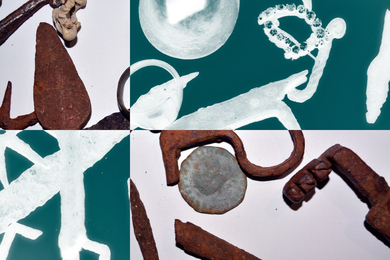As use of the Internet's World Wide Web by global information-seekers has increased dramatically, so has the number of users establishing their own "home pages," or sources of information that guide a user to material stemming from a particular topic. Now MIT has a staff member whose chief function is to help Institute departments, centers and labs electronically publish information about themselves.
Suzana Lisanti is the new CWIS (Campus-Wide Information System) Facilitator, a position that was created as MIT's CWIS grew from the five-year-old TechInfo to encompass the Web, Gopher and other global Internet services.
Formerly a trainer and technical writer in Information Systems, her job is now to help MIT departments and groups write home pages-documents created with a word processor and viewed by Web-browsing programs such as Mosaic that make is easier for users to get at text, sound, graphics and video that interest them. A home page acts as a starting point or index that's equipped with hyperlinks; clicking on highlighted words in a list or descriptive paragraph instantly sends the user to a related source of information stored anywhere on the Web, whether it's at MIT or halfway around the world.
MIT has a home page that directs users to TechInfo as well as to any of the Institute's hundreds of other home pages and approximately 30 servers (individual computers that provide information and are accessible from the Internet).
Two schools, the Sloan School of Management and the School of Architecture and Planning, have their own home pages, as do seven of MIT's 27 academic departments. There are also links to the pages of numerous labs, living groups, clubs and assorted interest groups. Many students also have personal home pages showing such things as research and recreational interests, photographs, resumes, and links to the person's other areas of interest.
I/S staff created MIT's home page (whose address is http://web.mit.edu) last spring, although the Student Information Processing Board created a web page about a year before that. "We needed an official home page to represent the Institute's mission of academic excellence, providing accurate information that represents MIT in its various facets," Ms. Lisanti said. That page is now accessed by up to 11,000 different computers each day. As of last Wednesday, there were 463 other college and university home pages on the Web.
Among the types of information that a department or group's home page can provide are faculty members' biographies and research interests, descriptions of ongoing research, lists of classes and syllabi, publications, upcoming events, and hyperlinks to other servers and home pages at MIT and elsewhere. It's also a good place to list answers to frequently asked questions that often occupy staff members' time, Ms. Lisanti noted; "this will cut down on people's phone calls."
Unlike TechInfo, Web pages also have mechanisms for interaction and feedback from the person who accesses them. A user can click a button to fill out an electronic form with comments or suggestions, or order printed material from the home page's department or group.
Because home pages can instantly provide information to a growing world-wide audience that can access this information around the clock, print it on their own printers,and free up time staff time now used to answer questions, they can be extremely useful. "My goal is to show how electronic publishing can bring business value to MIT-it's not just to make information look pretty," Ms. Lisanti said.
To create a home page, an individual or group needs access to MITnet and an idea of what information they want to put on the Web. Departments that want to create a page don't need to have a server in their own offices; I/S will provide them with 10 megabytes of disk space on Athena at no charge. With Ms. Lisanti's help, staff members can write a page using a simple coding system known as HTML (hypertext mark-up language). Other pre-existing documents can be translated to HTML from the word processing program in which they were created. A simple home page can take as little as an hour to create, she said.
To discuss and provide perspective on such Web issues as privacy, security and protocol for who publishes what information, Ms. Lisanti is assembling a CWIS advisory board of about 15 people from different areas of the Institute. "They'll help us to be advocates for different interests at MIT so we can make sure that the CWIS represents everybody," she explained.
Anyone needing assistance in creating a Web page or with other CWIS questions can contact Ms. Lisanti at x3-0101 or
A version of this article appeared in the October 19, 1994 issue of MIT Tech Talk (Volume 39, Number 8).





